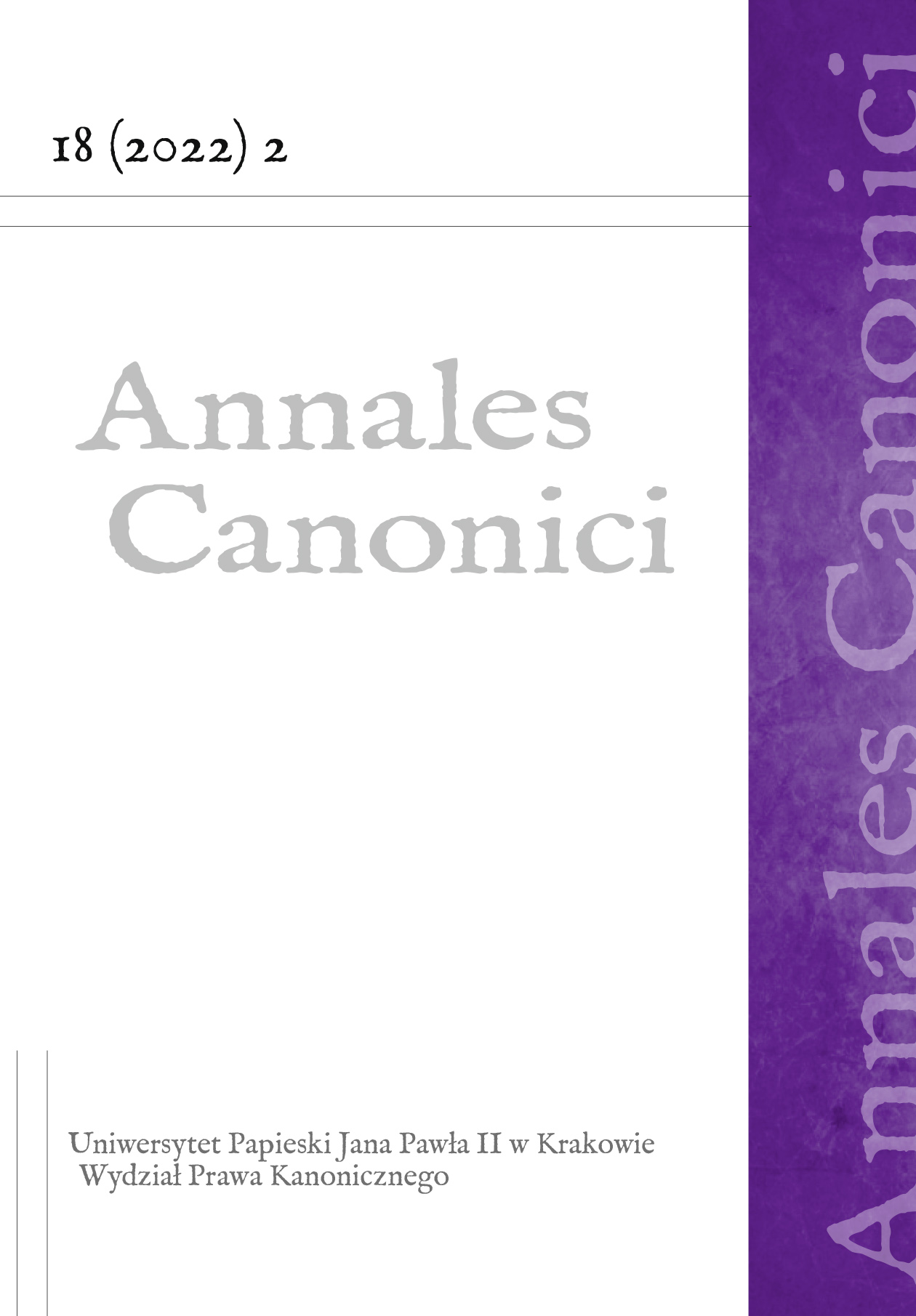The central Church’s justice institutions as statedin the Pope Francis’s “Praedicate Evangelium”Apostolic Constitution
DOI:
https://doi.org/10.15633/acan.18203Keywords:
Pope Francis, Roman Curia, reform, Apostolic Penitentiary, Supreme Tribunal of the Apostolic Signature, Tribunal of the Roman RotaAbstract
Since the Second Vatican Council, consecutive Bishops of Rome have been undertaking a reform of the Roman Curia. In 1967, Pope Paul VI carried out such a reform based on the Regimini Ecclesiae universae Apostolic Constitution. In 1983, a year after the post-council Canon Law was promulgated Pope John Paul II carried out a similar reform by announcing the Pastor bonus Apostolic Constitution in 1988. Also, Pope Francis followed his steps. He reformed the Holy See’s administrative apparatus by introducing the Praedicate Evangelium Apostolic Constitution on the Roman Curia and its service for the Church. The constitution has been in force since June 5, 2022. The pre amble of the latest Apostolic Constitution as well as the formulated rules and criteria of service in the Roman Curia show an evangelic spirit of the reform that all the Curia units, including the justice institutions, ought to be imbued. Independent from each other, the Apostolic Penitentiary, the Supreme Tribunal of the Apostolic Signature and the Tribunal of the Roman Rota have remained the Roman Curia’s ordinary justice institutions. The document includes clarifications of the theological, formal and legal nature that improve work of the institution of Curia and direct them towards “providing assistance for the successor of St. Peter in holding his highest pastoral office for good and in service of the Universal Church and particular churches.”
References
Benedykt XVI, List apostolski motu proprio Quaerit semper, 30.08.2011.
Codex Iuris Canonici auctoritate Ioannis Pauli PP. II promulgatus. Kodeks prawa kanonicznego promulgowany przez papieża Jana Pawła II w dniu 25 stycznia 1983 roku. Stan prawny na dzień 18 maja 2022 roku. Zaktualizowany przekład na język polski, Poznań 2022.
Commentz C. E., Quando e come ricorrere alla Penitenzieria Apostolica, Città del Vaticano 2011.
Franciszek, Konstytucja apostolska Praedicate Evangelium, 19.03.2022.
Franciszek, List apostolski Misericordia et misera, 20.11.2016.
Funghini R., Tribunale della Rota Romana, w: Commento alla „Pastor Bonus” e alle norme sussidiarie della Curia Romana, a cura di P. V. Pinto, Città del Vaticano 2003, s. 183–192.
Girotti G., Penitenzieria Apostolica, w: Commento alla „Pastor Bonus” e alle norme sussidiarie della Curia Romana, a cura di P. V. Pinto, Città del Vaticano 2003, s. 168–172.
Jan Paweł II , Konstytucja apostolska Pastor bonus, 28.06.1988.
Malecha P., Lex propria Najwyższego Trybunału Sygnatury Apostolskiej, w: Finis legis Christus. Księga pamiątkowa dedykowana Księdzu Profesorowi Wojciechowi Góralskiemu z okazji siedemdziesiątej rocznicy urodzin, red. J. Wroceński, J. Krajczyński, t. 1, Warszawa 2009, s. 565–585.
Paweł VI, Konstytucja apostolska Regimini Ecclesiae universae, 15.08.1967.
Pinto P. V., Tribunali, w: Commento alla „Pastor Bonus” e alle norme sussidiarie della Curia Romana, a cura di P. V. Pinto, Città del Vaticano 2003, s. 165–167.
Pompedda M. F., Supremo Tribunale della Segnatura Apostolica, w: Commento alla „Pastor Bonus” e alle norme sussidiarie della Curia Romana, a cura di P. V. Pinto, Città del Vaticano 2003, s. 173–182.
Steczkowski P., Penitencjaria Apostolska XIII–XVI w. Powstanie, ewolucja, odnowienie, Rzeszów 2013.
Downloads
Published
Issue
Section
License
Copyright (c) 2022 Tomasz Rozkrut

This work is licensed under a Creative Commons Attribution 4.0 International License.
The author declares that he owns the copyright to the work (article) and that it is not limited in the scope covered by the above declaration and that the work (article) is an original work and does not infringe the copyright of other persons.
The author allows the Pontifical University of John Paul II in Krakow to use the paper free of charge, non-exclusive and unlimited in time by, i.e.:
– keeping in records and reproduction of the copies of the work using printing, reprography, magnetic recording and digital technology;
– trade in the original or copies on which the work has been recorded (introduction to the market, lending or rental of the original or copies, public exhibition, display, as well as making the work available to the public in such a way that everyone can have access to it in a place and at a time chosen by them);
– inclusion of the work in a collective work;
– granting by the Pontifical University of John Paul II in Krakow a Creative Commons Sub-licence Authorship Recognition-Non-commercial Use-No Subsidiaries 3.0 Poland
The Pontifical University of John Paul II in Krakow makes the work available on the Magazine Platform of the university under the Creative Commons Attribution-Non-commercial Use-No Subsidiary Works 3.0 Poland license.
Thus, it entitles all interested parties to use the work under the following conditions:
- the author and the title of the work will be given,
- the place of publication (journal title and internet address of the originally published work) will be indicated,
- the work will be distributed in a non-commercial manner,
- no dependent works will be created.

